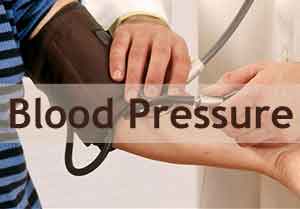- Home
- Editorial
- News
- Practice Guidelines
- Anesthesiology Guidelines
- Cancer Guidelines
- Cardiac Sciences Guidelines
- Critical Care Guidelines
- Dentistry Guidelines
- Dermatology Guidelines
- Diabetes and Endo Guidelines
- Diagnostics Guidelines
- ENT Guidelines
- Featured Practice Guidelines
- Gastroenterology Guidelines
- Geriatrics Guidelines
- Medicine Guidelines
- Nephrology Guidelines
- Neurosciences Guidelines
- Obs and Gynae Guidelines
- Ophthalmology Guidelines
- Orthopaedics Guidelines
- Paediatrics Guidelines
- Psychiatry Guidelines
- Pulmonology Guidelines
- Radiology Guidelines
- Surgery Guidelines
- Urology Guidelines
Home blood pressure monitoring works best with extra support

People who monitor their own blood pressure at home may get better results if they also have extra support like counseling and lifestyle coaching, a research review suggests.
To see how blood pressure control is influenced by patients checking it themselves at home, researchers examined data from 25 previously published studies that randomly assigned a total of more than 10,000 people to either monitor themselves regularly or just stick with usual care including periodic checkups at the doctor.
Overall, for people who didn’t get extra support to go along with their home testing, there wasn’t much difference between self-monitoring and sticking with blood pressure checks only at the doctor’s office, the study found.
But when home monitoring was paired with extra support or medication adjustments managed by patients based on test results, people achieved significantly lower blood pressure compared to usual care.
“If self-monitoring is combined with ongoing tailored interaction with the patient, then this can enable important improvements in blood pressure control, over and above self-monitoring on its own,” said lead study author Dr. Katherine Tucker of the University of Oxford in the UK.
“Our research shows that increased collaboration between a patient and either their general practitioner, a nurse or a pharmacist in the treatment of hypertension can result in important decreases in blood pressure and improved control necessary to improve a patient’s health,” Tucker said by email.
Home blood pressure monitoring is currently recommended for many patients because it can help get more accurate readings than are obtained at the doctor’s office, and it can also assist clinicians in adjusting medication between checkups.
While some research suggests home monitoring can help achieve better results than testing only in the exam room, it’s not yet clear who benefits most from this approach or how to make it most effective, researchers note in PLoS Medicine.
In adults, a blood pressure reading of 120/80 mmHg (millimeters of mercury) or lower is considered normal or healthy. Pressure readings that are consistently 140/90 mmHg or greater are considered high blood pressure.
When researchers looked at the “top number” known as systolic blood pressure (the pressure blood exerts against artery walls when the heart beats), they found home blood pressure checks were associated with average reductions that were 3.2 mmHg larger than with usual care over 12 months.
When self-monitoring wasn’t paired with any additional support, however, it was only linked to an extra 1-mmHg drop in blood pressure compared to usual care – a difference too small to rule out the possibility that it was due to chance.
With plenty of extra help tailored to patients’ individual needs, self-monitoring was associated with a blood pressure reduction 6.1 mmHg larger than with usual care, the study found.
One limitation of the analysis is that the smaller studies included had different methods and varying criteria for selecting participants, which made it difficult to draw broad conclusions from examining the combined results, the authors note.
Still, the findings suggest that self-monitoring can play an important role in helping patients get blood pressure under control, said Dr. Costantino Iadecola, director of the Feil Family Brain and Mind Research Institute at Weill Cornell Medical College in New York.
For one thing, home testing can help spot variation in blood pressure between checkups, Iadecola, who wasn’t involved in the study, said by email. Readings outside an exam room may also be more accurate for some people who get what’s known as “white coat hypertension,” or stress-related blood pressure spikes during checkups, Iadecola added.
“Taking action at the time of elevated readings provides opportunities for teachable moments in which education and counseling may be more likely to lead to behavior change on the part of the patients,” Kronish said by email. “Similarly, with self-monitoring, clinicians may have more opportunities to take action to get patients’ blood pressure to goal through increased medication.”
For more details click on the link: bit.ly/2xM4r9S PLoS Medicine, online September 19, 2017

Disclaimer: This site is primarily intended for healthcare professionals. Any content/information on this website does not replace the advice of medical and/or health professionals and should not be construed as medical/diagnostic advice/endorsement or prescription. Use of this site is subject to our terms of use, privacy policy, advertisement policy. © 2020 Minerva Medical Treatment Pvt Ltd